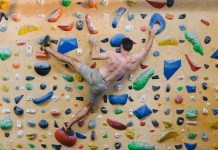South African pilot who flew over stadium during final of 1995 Rugby World Cup dies
The Associated Press / Times Colonist
April 25, 2013 04:27 AM
This photo taken June 7, 2010 shows retired pilot Laurie Kay, who flew a 747 aircraft over the stadium at the 1995 Rugby World Cup final in Johannesburg. Kay died of a heart attack Wednesday, April 24, 2014. He was 67. (AP Photo/Jennifer Bruce-Independent Newspapers Limited South Africa) SOUTH AFRICA OUT
JOHANNESBURG – Laurie Kay, a South African pilot best known for flying a Boeing 747 passenger jet low over a Johannesburg stadium before the final of the 1995 Rugby World Cup, has died at the age of 67.
Kay had a suspected heart attack on Wednesday at the offices of the anti-rhinoceros poaching unit in Kruger National Park, South Africa’s showcase game reserve, according to the country’s parks service. Kay flew helicopters on patrols aimed at stopping poachers and was also doing technical work on a new anti-poaching surveillance aircraft, said Ike Phaahla, a parks spokesman.
“He was a great aviator, ” Phaahla said. “He was a gentleman. He had this outgoing personality. He made you feel very easy around him.”
Kay was a South African Airways pilot when he swooped twice over Ellis Park stadium in a big jet at the start of the June 24, 1995, rugby final in which South Africa defeated New Zealand by a score of 15-12. The stenciled underside of the plane read “Good Luck Bokke” in a message of support for South Africa’s national team, the Springboks.
One witness was Des Chetty, who was then a guard on the protective detail for F.W. de Klerk, the last president of the apartheid era that ended in 1994.
“It was a surreal feeling, ” Chetty wrote in an email. “One felt that if standing on the roof of the grandstands, you could have touched the belly of the plane. That’s how close it felt. It was absolutely loud.”
The daring stunt, depicted in the Hollywood movie “Invictus, ” electrified tens of thousands of fans who had no inkling that authorities had planned for a giant passenger jet to roar overhead. South Africa’s ensuing victory on the field was a euphoric, unifying occasion for a country that had recently emerged from white racist rule.
Nelson Mandela, the anti-apartheid leader who became South Africa’s first black president in 1994 elections, attended the game in a South African team shirt. It was a powerful gesture of reconciliation because rugby was a cultural bastion of white Afrikaners, who were guardians of the apartheid system.
Kay’s flyover in a densely populated city flouted the most basic guidelines in international aviation, said John Carlin, author of “Playing the Enemy: Nelson Mandela and the Game That Made a Nation.”
“The idea was to release maximum vibrations, noise and power into the stadium with a view to energizing the crowd and energizing the players, ” Carlin said in a telephone interview from Spain. “He got the plane very near to stalling in order to get that maximum power effect when he was over the stadium. It was pretty outrageous.”
According to South African Airways, Kay and his crew had spent the previous week plotting the course, flying it many times in a light plane, and spending hours in a flight simulator. Director Clint Eastwood included the flyover episode in “Invictus, ” the 2009 film about South Africa’s rugby victory that starred Morgan Freeman as Mandela.
The Boeing 747 was empty save for a small crew during the flyover, making it highly manoeuvrable despite its large size, noted Tony Smit, a longtime friend and pilot.
“There was nothing daredevil about Laurie, ” said Smit, who praised Kay for charity work and the mentoring of young pilots. “Everything that he did in aerobatics shows, everything is calculated to the finest degree.”










